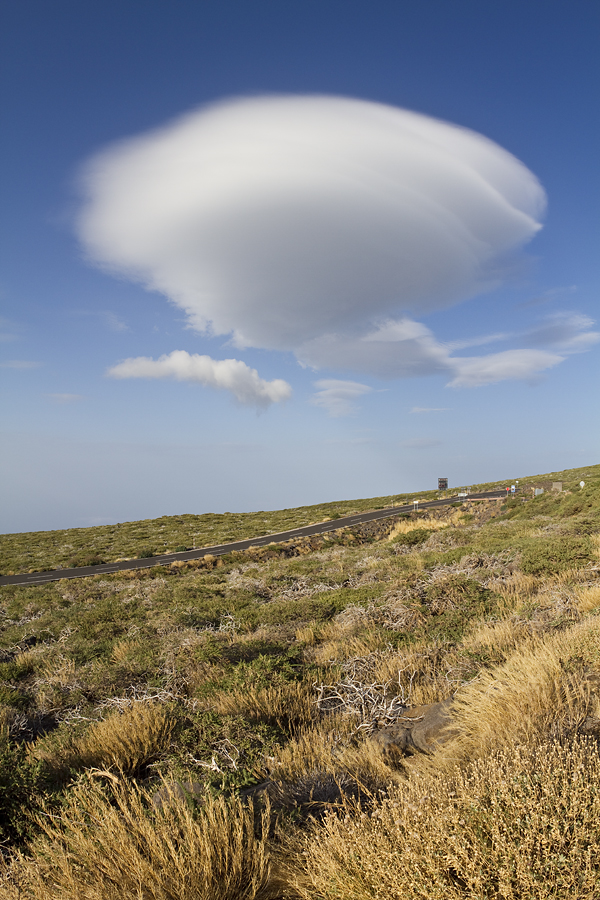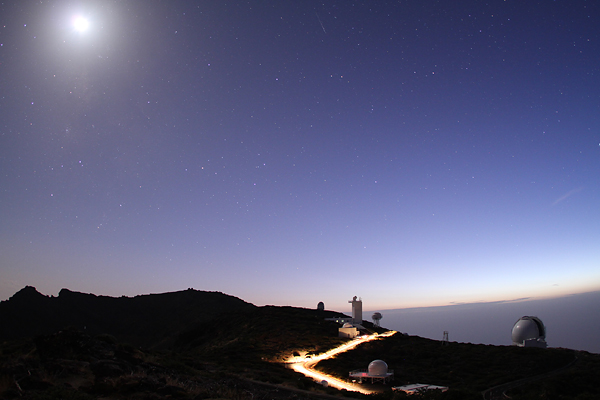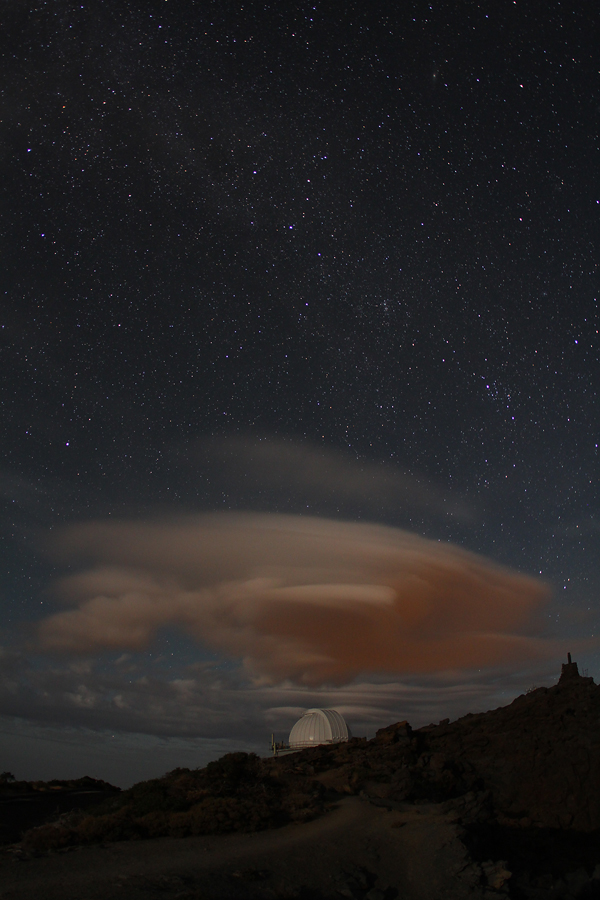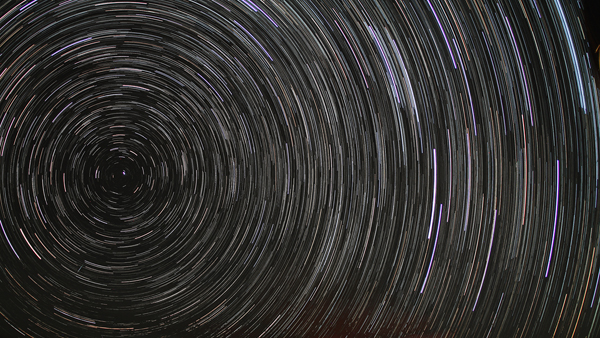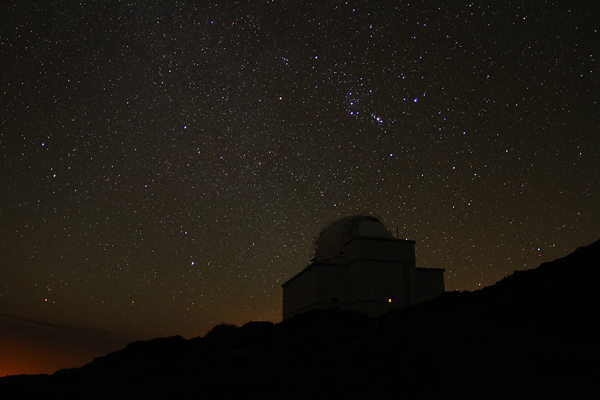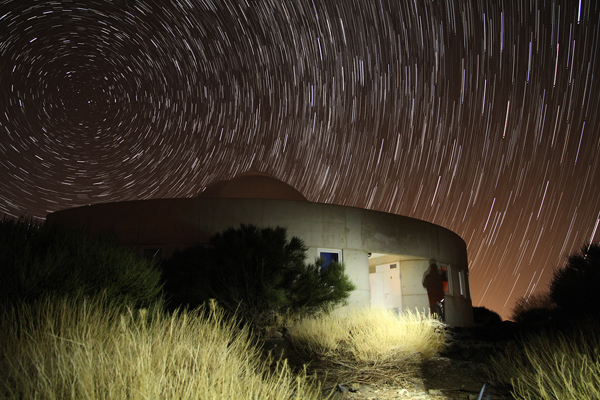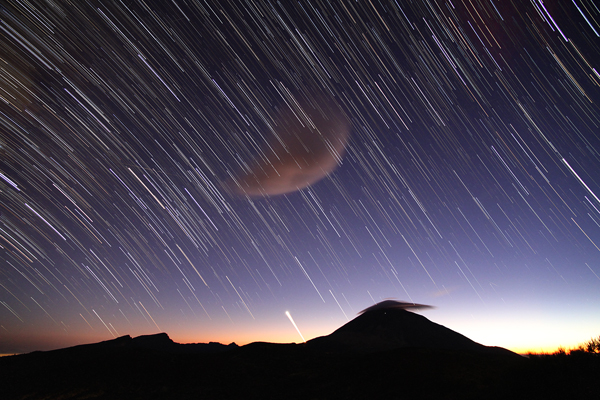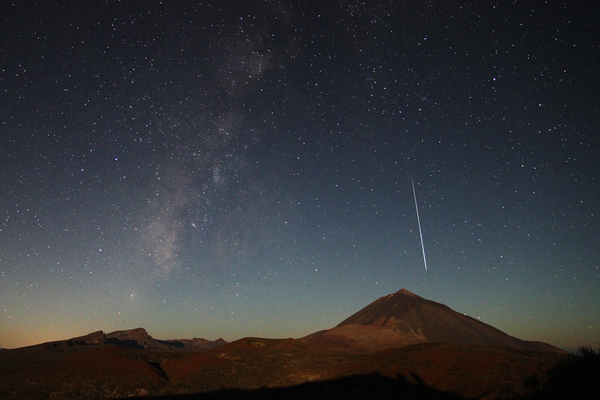For my last three observing runs, I preferred to have my racing bike with me on the Canary Islands instead of my photo gear. It would have been especially hard (and heavy) to carry my tripod along when I had to take care of my bike box… But now, at the end of the cycling season (and with quite some kilometers ridden on the Canaries in May and August already), I decided to bring the hardcore photography stuff. Thanks to Jonas now I even have a Canon EF 15mm f/2.8 fisheye lens with me. The view angle is basically the same (though the distortion is very different) as with my standard lens, but the maximum aperture is larger, which enables me to capture more of the faint starlight on the same exposure. Everything you will see in this post was taken with that lens. (Thanks again, Jonas!)
Of course packing was hell again (luckily I had better thing to do on the weekend, like cycling, playing with FIFA 12 – call me a child, I do not care :D), and I did not sleep too much during the night (but then almost 5 more hours on the planes, and this was the first time I have flown with a CRJ900). As my observing run starts on Wednesday only, now I have some time to concentrate on photography. The main goal is to take hundreds (thousands) of images again, and make a new version of my time lapse movie, The Starts of Mercator. And there are always some special things to take additional pictures of :) So lets see what we have here.
This was the first time ever that I have seen lenticular clouds over La Palma. They are usually not seen in good weather, so in astronomical terms, this was a bad sign for the forthcoming night… But not in photographic terms ;)
It was only ‘half moon’ (first quarter) over the Observatory, but it is already very bright. Without the moonlight, you cloud see the Milky Way towards the center of our galaxy on the left side of the picture. Now it is only visible, if you know what to look for… The bright path on the bottom is created by the headlights of someone driving up to the telescopes, and as you can see the dome of the WHT is open in the bottom right corner.
The lenticular cloud stayed for hours there, so I took a picture of it (and a whole time lapse sequence too) with the dorm of the Jacobus Kapteyn telescope in the foreground. Plus you can see the dim, outer part (looking into the anti-center direction) of the Milky Way with constellations like Cassiopeia and Perseus, plus you can easily (if you are/were an amateur astronomer) spot the Andromeda Galaxy in the top right corner.
Jupiter (the brightest ‘star’) and some winter constellations rising behind the INT building right before moonset (that’s why the building looks yellow and instead of white).
Looking towards the North celestistial pole. E pur si muove. It is not a real long exposure shot, but 140 (30 sec exposures) images stacked together from another time lapse sequence. The virtual circles are very nicely preserved thanks to the fisheye lens (compare it to the distortion of a standard lens here.)
Orion rising behind the INT. One hour before the arrival of the storm…
And then, at last but not least, the most special picture of the night. It is – again – part of a time lapse sequence, and you can see red sprites on the top, just below Orion. This is an extremely rarely photographed high altitude lightning, if you do a Google search on it, you won’t find many colour images… And to make it even more special, I was outside – monitoring the weather – when it happened, so I even saw it with my own eyes!!! Just as a red flash thanks to my peripheral vision, but I have seen it! Normally they can be seen from much further and at a lower view angle (and then they look more elongated thanks to the different perspective), so this is really the first image I have ever seen taken from almost below the event. Nice :)
